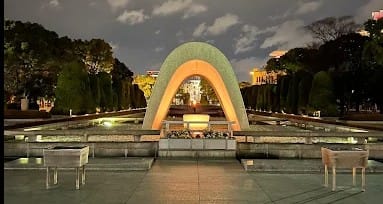Table of Contents

Introduction: What Is Hiroshima Day?
Hiroshima Day is observed annually on August 6 to commemorate the tragic atomic bombing of Hiroshima, Japan, in 1945, during World War II. This day serves as a global reminder of the devastating consequences of nuclear warfare and renews calls for peace, disarmament, and global unity.
On this day, the world remembers over 140,000 lives lost, honors survivors (called Hibakusha), and reflects on the urgent need to prevent such tragedies in the future.
Historical Background of Hiroshima Bombing
H3: Why Was Hiroshima Targeted?
On August 6, 1945, the U.S. dropped the first atomic bomb, codenamed “Little Boy,” on Hiroshima, a city with military significance and industrial infrastructure. Within seconds, the bomb released a blinding flash and fireball, destroying nearly 70% of the city’s buildings.
Aftermath and Casualties
The immediate impact killed an estimated 70,000 people. Over the following weeks and months, the death toll doubled due to radiation sickness, burns, and injuries. Thousands more would suffer long-term effects from radiation exposure, including cancer and genetic disorders.
Significance of Hiroshima Day
H3: A Symbol of Peace
Hiroshima Day has evolved from a national day of mourning into a global symbol of peace. The message it carries today is not one of blame, but of collective responsibility to ensure that nuclear weapons are never used again.
International Peace Ceremonies
Every year, the Hiroshima Peace Memorial Ceremony takes place at the Peace Memorial Park, where the Peace Bell is rung, and lanterns are floated on the Motoyasu River, symbolizing souls lost and a hope for peace.
Promotion of Nuclear Disarmament
Nations around the world use this day to reaffirm their commitment to nuclear disarmament, in alignment with treaties like the Treaty on the Non-Proliferation of Nuclear Weapons (NPT) and the Treaty on the Prohibition of Nuclear Weapons (TPNW).
Hiroshima Day and India
India’s Observance of Hiroshima Day
In India, educational institutions, peace organizations, and NGOs commemorate Hiroshima Day with:
- Peace rallies and candlelight vigils
- Debates and essays on nuclear ethics
- Exhibitions showcasing photographs and survivor stories
India’s Nuclear Policy
Although India is a nuclear-armed nation, it maintains a “No First Use” policy and supports global nuclear disarmament dialogues. Hiroshima Day serves as a critical reminder for policymakers and citizens alike to balance security with humanity.
The Survivors – Voices of the Hibakusha
Who Are the Hibakusha?
The Hibakusha are survivors of the atomic bombings of Hiroshima and Nagasaki. Their stories form the emotional and moral backbone of anti-nuclear activism.
“No one else should ever suffer as we did.” — A common cry among the Hibakusha, calling for a world without nuclear weapons.
Their Role in Advocacy
Many survivors have spent their lives testifying at the United Nations, writing memoirs, and educating youth across the globe about the horrific realities of nuclear warfare.
Hiroshima Peace Memorial Park – A Living Reminder
The Hiroshima Peace Memorial Park was established near the bomb’s hypocenter and houses:
- Atomic Bomb Dome (Genbaku Dome) – a UNESCO World Heritage Site
- Peace Memorial Museum – documents the aftermath and personal belongings of victims
- Children’s Peace Monument – inspired by Sadako Sasaki, a child victim who folded 1,000 paper cranes wishing for recovery
This site has become a pilgrimage for peace advocates worldwide.
Modern-Day Relevance of Hiroshima Day
Rising Nuclear Tensions
As of 2024, the global stockpile of nuclear weapons remains dangerously high. Rising geopolitical tensions between Russia, the U.S., North Korea, and Iran threaten the fragile peace.
Hiroshima Day reminds the world of what’s at stake — and why diplomatic engagement is essential.
Peace Education for Youth
Governments and NGOs emphasize peace education on Hiroshima Day. The goal is to foster a generation that values dialogue over destruction, understanding over ideology.
Real-World Case Study: The Paper Cranes for Peace Movement
Inspired by Sadako Sasaki, a Hiroshima child victim, students around the world now fold 1,000 origami cranes as a symbol of peace and healing. This movement has reached schools in India, the U.S., Germany, and Australia.
In 2023, over 2 million paper cranes were sent to Hiroshima from students globally — showcasing the enduring emotional connection and educational power of this tragic history.
Conclusion: Why Hiroshima Day Matters Today
Hiroshima Day is more than a remembrance of tragedy. It is a call to action — to educate, to advocate, and to preserve peace. As the world faces new threats of nuclear escalation, the legacy of Hiroshima compels us to choose humanity over hostility.
Let us honor the victims by working toward a nuclear-free, peaceful world, one informed choice at a time.
HiroshimaDay #PeaceNotWar #SayNoToNukes #NeverAgain #Hibakusha #NuclearDisarmament #IndiaForPeace #WorldPeace #HistoryMatters #August6


